test heading
Noticing patterns is a part of my job, so as I dove deep into research for my first :01 cover design, I couldn’t help but notice the Mystery of the V-Blondes of Mystery.
The women on vintage and even contemporary mystery covers are, more often than not, busty blondes that generally fall into one or another simple category: Victim or Vixen. You’d think you’d be able to tell the V-Blondes apart by how scanitly dressed they are, but another pattern is that both types are often pretty disheveled in the clothing department. (Who knew ghosts and murderers loved fabric so much!) The true way to tell if they are a Victim or a Vixen is by their gaze. If they are looking directly at the reader they are a Vixen and are not to be trusted. They are the ones hiding knives in their shoes and poison in that cup of brandy. If they are looking away—namely at a ghost, creepy closed door, towards a dark alley or graveyard, or um… at their own hand (sorry that last one made me laugh too hard to not include it), they are a Victim. Their role is to be saved as the mystery is solved. And often not much more than that.
CAT BURGLAR BLACK was the first book I designed for :01. Whenever I start a new project I completely go overboard with research. This time it included pouring over old covers in all of the used bookstores I know, watching old mystery movies, and wading through the huge pools of mystery covers and posters so wonderfully cataloged on flickr by collectors. Two of my favorite flickr members let me use their scans in this post: THE WOMAN IN THE WOODS, whose photo stream is simply one of the best out there; and cover collector and artist MATTHEW KIRSCHT. I warn you, in case you have something important to do that doesn’t involve designing a mystery cover, you can spend hours looking at their collections. I know I did.
- What struck me most about the image Richard Sala drew for the CAT BURGLAR BLACK cover was how it played with this idea of the traditional mystery novel cover: the creepy unnatural glow of his gorgeous watercolor bleeds, a the beautiful girl as the focal point, eerily background and sinister landscape. But at the same time a quick glance made me realize four things. She is
not a blonde* - not a vixen
- most certainly not a victim
- alone—no skeletons, no men—just a girl who is about to have her own story. One she completely owns. K.’s stance is powerful. Her gaze isn’t one of fear, but rather one of intelligence. She knows something we don’t. And it’s pretty hard to look at that image and not want to find out what it is.
a white haired teenager? How bizarre!
I guess I should talk about the parts I actually designed and I could bore you with talk of foil and the ridiculous things I do when picking a style of it for a book cover: Walk into a room with lightbulbs; walk into a room with fluorescence; turn off the light and see if you can still read it; hold it at every possible angle a book could wind up on the shelf. Is it shiny enough? Is it too shiny? Too yellow? Too red? Why am I using foil for this? Am I accidentally writing the paragraph I just said I wouldn’t? Why yes! Yes, I am!
I wanted the logo to be contemporary, to mimic the blue glow of the background and to be something else that K. was conquering. She stands above it and presses that G down into a defeated squiggle. (For those design-y folk who like to deconstruct things: if you ever need to make a box 4 lower case l’s work wonderfully and sideways S’s make great accents. Letters are just shapes, and often pretty beautiful ones.)
In my mystery binge, along with getting annoyed with all the pointy boobed bondes with tiny waists, I also learned of a designer/artist named Tom Adams. He was resonsible for reworking all of Agatha Christie’s books in the 70’s. Many of her previous covers had not only been overly narrative but were covered in V-blondes (more often Victims than Vixens, since, as I’m sure you know, Christie was a proper lady). Adams took these stories and gave them iconic and haunting covers, often with simple still lifes or collages, and when he did choose to include a blonde…or at least part of her hair, he broke the line of victim and vixen. The hair suggests she’s in trouble, but her stare and faint smile in that picture says otherwise. The only way you’d know is to read the book. Which is exactly what it made me want to do.


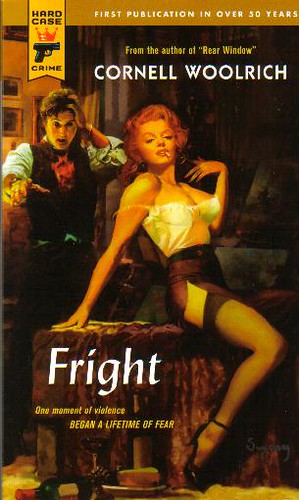
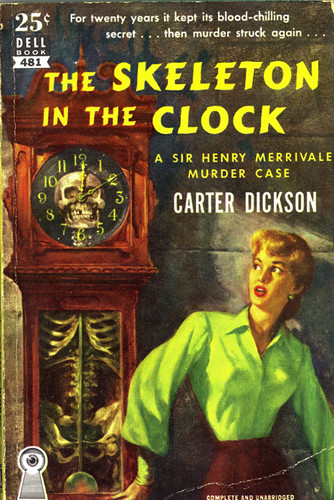


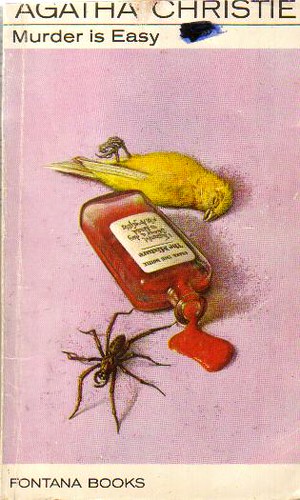
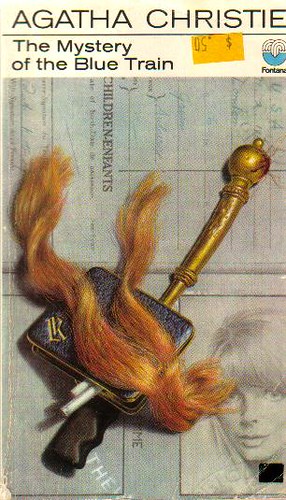

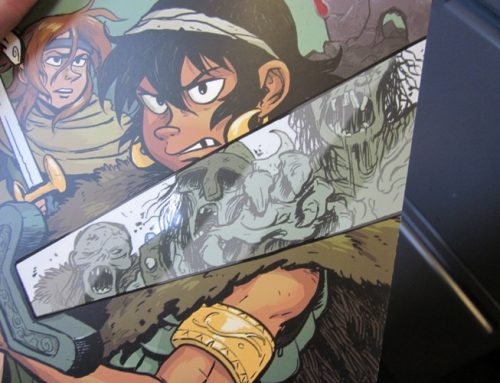

Well don’t know whats going on but its not a Good way to do this. in my opinion we have to look again about this issue
Great article – and it was fun to see my Flickr stream mentioned (The Woman in the Woods). Thank you!
I too feel annoyance about the stereotypical woman that features on so many pulp and/or mystery covers. Yes, she’s often blonde and busty; yes, she’s often scantily clad. As a woman myself I feel frustration that my sex is so often either the sad little victim or the evil, man hungry vixen. But as a book cover collector I look past that and concentrate on the quality of the art, the design and the impact it has on me… and as most pulp and older mystery covers feature the stereotypical woman, I wouldn’t have a very big collection if I did otherwise!
I’m glad you discovered Tom Adams through my photo stream. He was (and still is) one of the great cover artists. His covers tell stories, which I love. And with barely a blonde busty woman in sight!